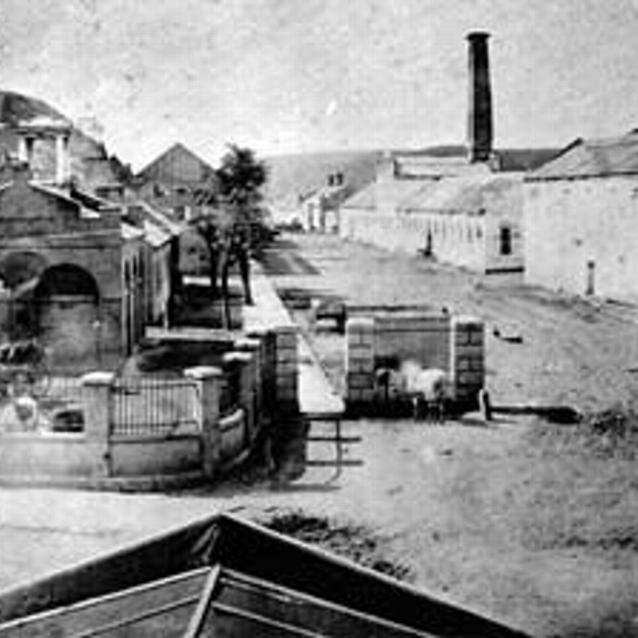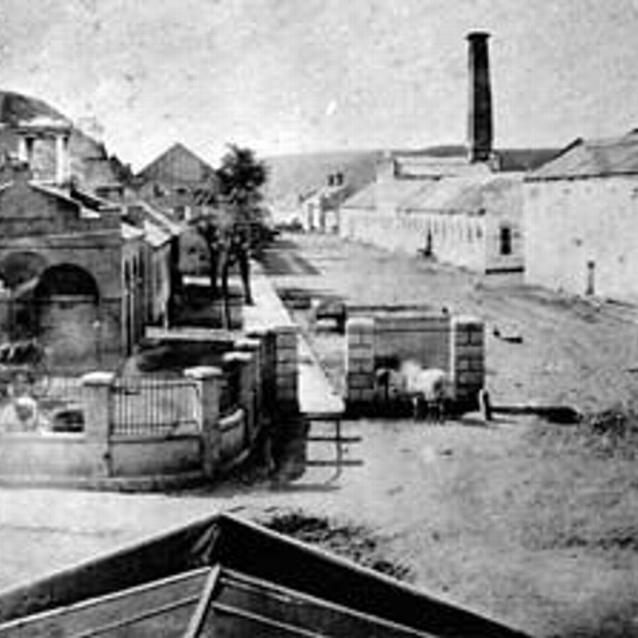What does the National Park Service do when a park acquires a new piece of property? Part of the Service's responsibility is to take inventory of resources. When six acres of the former Armory were added to Harpers Ferry National Historical Park in West Virginia, the park acquired not only the original site of John Brown's Fort but also the archeological remains of other important structures including the Wager Warehouse and the Smith and Forging Shop. Archeologists surveyed, tested, and mapped these important resources.
Artifacts discovered span the entire occupational history of the Armory, including items from prehistoric times through modern periods.
Archeology at the U.S. Armory

National Park Service
The Harpers Ferry National Historical Park (NHP) Archeology Program is recently completed a three-year long study of the historic U.S. Armory Grounds. The Armory at Harpers Ferry is a site of the first order of significance, and has associations with nationally important historical figures, such as George Washington, Meriwether Lewis, Robert E. Lee, and John Brown.
Harpers Ferry's role in supplying munitions is equally important to the history of the United States. For nearly 65 years, between 1799 and 1861, factories at Harpers Ferry made the nation's weapons. During the time of its operation, weapons manufacturing at Harpers Ferry Armory evolved from a craft-oriented process to a system of mass production of interchangeable parts. This archeological investigation provides a tremendous opportunity to learn about 19th-century manufacturing in general, and arms production in particular.
Background to the Project
History of the Armory at Harpers Ferry NHP

The Armory was established at Harpers Ferry in 1798. The site was selected personally by President George Washington over the strong objections of several of his advisors. Where Washington saw "the most eligible spot on the whole river in every point of view," his advisors saw an isolated, frontier setting that was prone to flooding. One early visitor to the town called it "an abominable little village." In the end, however, Washington prevailed and the Armory was built at Harpers Ferry. The first guns were made at the Armory in 1801.
Some of the equipment for the Lewis and Clark expedition of 1803 was made or requisitioned from the Armory. Items that the Corp of Discovery requisitioned from the Armory included rifles, spare parts, presents for Native Americans and a curious collapsible iron boat frame.
Another building of historic significance at Harpers Ferry is the "Wager Warehouse," a 100 foot-long frame building that actually predates the Armory. It was originally a part of Robert Harper's 18th-century ferrying business on the Potomac River. Later it was converted to a temporary workshop where arms were re-conditioned. Later still, it was converted to living quarters for the Armory superintendent. The building was dismantled in 1809, but maps show that it stood near the east edge of the Musket Factory Yard. One of the goals of the Harpers Ferry archeological inventory project is to identify archeological resources relating to this building.
Two major expansions were made to the armory facilities. The first expansion occurred from 1808 to 1810 in preparation for the War of 1812. At that time, the number of workshops in the Musket Factory increased from five to 12. A second row of factory buildings was added on the river's edge and a 70-foot wide street was built in between the two rows of workshops. The number of Armory workers increased from 20 in 1798 to almost 200 in 1810. By the mid-1820s, the site was a full-fledged industrial center.
The second major expansion to the physical plant of the Armory began in the early 1840s. Like the construction program three decades earlier, the 1840s-era expansion was also a great period of change at the Armory in terms of buildings. By the 1840s, most of the buildings were in poor condition and were no longer adequate for their intended use. The Army's Chief of Ordnance wrote, "The strongest necessity exists for the improvement of the public buildings at Harper's Ferry Armory-they are at present exceedingly unsightly and unworthy of a National Establishment..."
The Superintendent of the Armory, who also happened to be a talented engineer, resolved to fix the problems and totally renovate the armory's architecture. He insisted that all new buildings be well-designed, built of the best materials, and of good workmanship. Settling on a Gothic architectural style that featured crenellated gable ends and distinctive arches, he achieved an architectural and functional unity that the Armory had previously lacked. In all, 25 new buildings were constructed during the building program that began in the 1840s and lasted into the 1850s.
Harpers Ferry in the Civil War
Harpers Ferry Armory Archeological Project - Results of the First Year
Last updated: August 21, 2017
